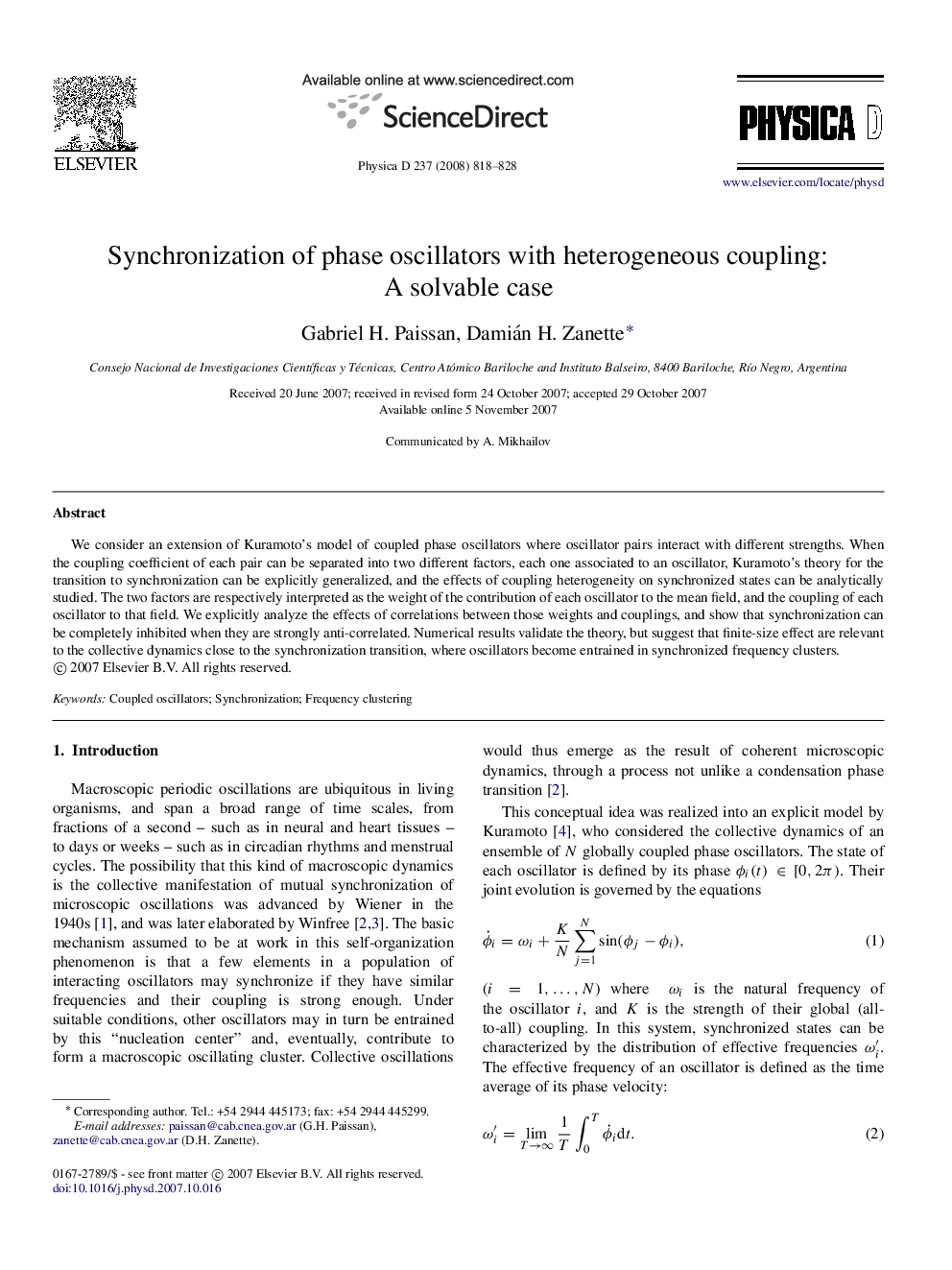| Article ID | Journal | Published Year | Pages | File Type |
|---|---|---|---|---|
| 1899893 | Physica D: Nonlinear Phenomena | 2008 | 11 Pages |
We consider an extension of Kuramoto’s model of coupled phase oscillators where oscillator pairs interact with different strengths. When the coupling coefficient of each pair can be separated into two different factors, each one associated to an oscillator, Kuramoto’s theory for the transition to synchronization can be explicitly generalized, and the effects of coupling heterogeneity on synchronized states can be analytically studied. The two factors are respectively interpreted as the weight of the contribution of each oscillator to the mean field, and the coupling of each oscillator to that field. We explicitly analyze the effects of correlations between those weights and couplings, and show that synchronization can be completely inhibited when they are strongly anti-correlated. Numerical results validate the theory, but suggest that finite-size effect are relevant to the collective dynamics close to the synchronization transition, where oscillators become entrained in synchronized frequency clusters.
